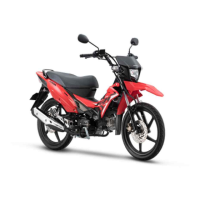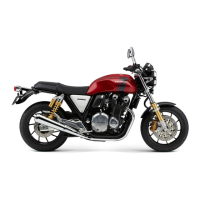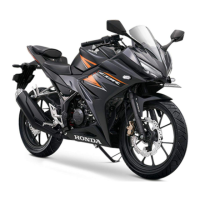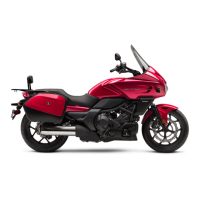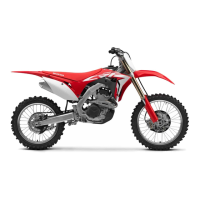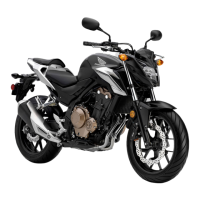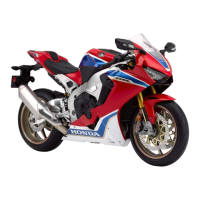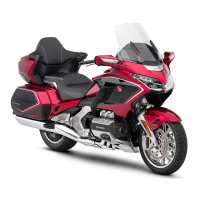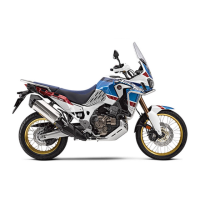Do you have a question about the Honda XR150 2018 and is the answer not in the manual?
Guidelines for safe motorcycle operation, including inspections and fuel handling.
Essential precautions for safe riding, focusing on gear and passenger safety.
Safe riding practices for break-in, braking, and various road conditions.
Guidance on safe and legal accessory installation and motorcycle modifications.
Tips for safe operation in off-road environments, including rules and terrain awareness.
Procedures for securely and safely carrying luggage on the motorcycle.
Identification of major motorcycle components with page references.
Explanation of the odometer, speedometer, and tripmeter functions.
Description of dashboard indicators like turn signals and neutral light.
Operation of controls such as headlight dimmer, turn signal, and horn.
Functionality of the ignition switch and its positions.
Instructions for securing and releasing the steering lock.
Details on the three-way fuel valve operation.
Step-by-step guide for starting the engine under different conditions.
Illustration of the motorcycle's 5-speed gear shift pattern.
Safe and correct procedures for adding fuel to the motorcycle.
Rationale for regular maintenance for safety and performance.
Periodic service requirements based on usage and time.
Basic principles and pre-ride inspection procedures.
Guidelines on using genuine parts and avoiding non-genuine alternatives.
Information on the maintenance-free battery and its care.
Procedure for checking and replacing blown fuses.
Selection, checking, and changing engine oil.
Instructions for checking and recommended brake fluid types.
Inspection, cleaning, lubrication, and adjustment of the drive chain.
Inspection of wheels, rims, spokes, and tires for damage and wear.
Checking and adjusting clutch lever freeplay.
Procedure for checking throttle operation and freeplay.
Instructions for cleaning the crankcase breather.
Guidance on adjusting the headlight aim.
Diagnosis for engine starting issues and starter motor problems.
Steps for addressing tyre punctures and wheel removal.
Solutions for common electrical problems like dead batteries or blown fuses.
Procedure for replacing motorcycle light bulbs.
Details on ignition keys, spare keys, and key number management.
Information on ignition, indicators, and storage.
Guidelines for cleaning, polishing, and protecting the motorcycle.
Recommendations for long-term motorcycle storage.
Advice on safe transportation methods.
Information on eco-friendly cleaning and waste disposal.
Location and importance of frame and engine serial numbers.
Guidance on using fuels with alcohol and potential impacts.
Information on protecting the catalytic converter.
Key physical dimensions and weight specifications.
Technical data for tires, fluids, spark plugs, and oils.
Specifications for all motorcycle bulbs.
Ratings for main and other fuses.
Recommended torque values for critical fasteners.
| Displacement | 149.2 cc |
|---|---|
| Bore x Stroke | 57.3 mm x 57.8 mm |
| Compression Ratio | 9.5:1 |
| Fuel System | Carburetor |
| Ignition | CDI |
| Transmission | 5-speed |
| Front Suspension | Telescopic fork |
| Rear Suspension | Monoshock |
| Front Brake | Disc |
| Rear Brake | Drum |
| Front Tire | 90/90-19 |
| Rear Tire | 110/90-17 |
| Fuel Tank Capacity | 12 liters |
| Seat Height | 825 mm |
| Curb Weight | 129 kg |
| Max Torque | 12.5 Nm @ 6, 000 rpm |
| Ground Clearance | 245 mm |
| Engine Type | Air-cooled, 4-stroke, OHC |
| Length x Width x Height | 1, 125 mm |

